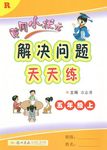题目内容
根据首字母在空白处填入适当的词:
Let children learn to judge their own work. A child learning to talk does not l (1) by being corrected (纠正) all the time: if corrected too much, he will stop t (2) . He notices(注意到) a thousand times a day the difference b (3) the language he uses and the language those around him use. Bit by bit, he m (4) the necessary (必要的) changes to make his language like other people's. In the same w (5) , children learning to do all the other things they learn to do without being t (6) -to walk, run, climb, whistle(吹口哨), ride a bicycle - compare (比较) their own performances (表现) with those of more skilled(熟练的) people, and slowly make the needed changes. But in school we n (7) give a child a chance(机会) to find out his mistakes for himself, let alone correct them. We do it all for him. We act as if we thought that he would never notice a mistake unless(除非) i (8) was pointed out to him, or correct it unless he was made to. Soon he becomes dependent on(依赖) the teacher. Let him do it h (9) . Let him work out, with the help of other children if he wants it, what this word says, what the answer is t (10) that problem, whether this is a good way of saying or doing this or not.
1.________ 2.________ 3.________ 4.________ 5.________
6.________ 7.________ 8.________ 9.________ 10.________
解析:
|
1.learn 导解:意为“不是通过纠正错误而学习”。 2.talking 导解:过多地纠错会导致他不再“说”。 3.between 导解:the difference与between搭配。 4.makes 导解:由下文slowly make the needed changes推知。 5.way 导解:in the…way为固定搭配。 6.taught 导解:由下文“通过比较,自我纠正来学习一项技能”可知此处意为“不是被教出来的”。 7.never 导解:学校从来就没有给过机会。 8.it 导解:it指上文的mistake. 9.himself 导解:himself指代宾语him. 10.to 导解:the answer to是固定搭配。 |

 黄冈小状元解决问题天天练系列答案
黄冈小状元解决问题天天练系列答案